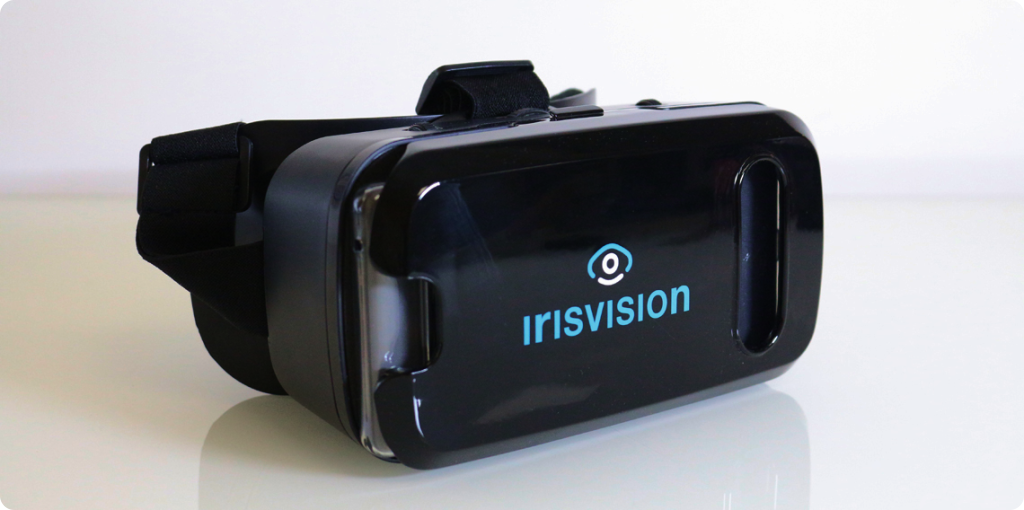IrisVision Live 2.0 stands as a beacon of progress in assistive technology, profoundly impacting the lives of individuals with low vision. Developed by IrisVision, this wearable device seamlessly integrates neuroscience, augmented reality, and mobile technology to create a holistic rehabilitation platform. The Live 2.0 upgrade introduces enhanced vision modes, providing a superior visual experience for users.
About the Company

IrisVision, a trailblazer in the field of wearable technology, collaborates with esteemed institutions such as Johns Hopkins University, Stanford University, and UPMC Pittsburgh. With over 3,000 individuals already benefitting from their technology, IrisVision is committed to helping those with low vision achieve newfound levels of independence.
What is IrisVision Live?
IrisVision Live is not merely a visual aid; it’s a comprehensive assistive device. Utilizing VR technology, it offers various vision modes like Focus, Scene, RP (Retinitis Pigmentosa), Outline, and Reading. The device boasts an adjustable bubble zoom, image capture and storage capabilities, integrated LED lighting, voice assistance, and the largest field of view at 70 degrees. This expansive field of view enhances the user’s visual experience, providing a broader perspective and adaptability for individuals with specific visual conditions like Retinitis Pigmentosa.
Why Upgrade from Live 1.0 to Live 2.0?
The transition from IrisVision Live to Live 2.0 was driven by advancements in smartphone technology. Live 2.0 brings substantial improvements in battery life and performance, offering users a cutting-edge platform and design. These enhancements address the evolving needs of individuals with low vision, providing an even more potent tool for their daily activities.
How does IrisVision Live 2.0 improve functionality?
Serving as a comprehensive assistive device, it goes beyond being a visual aid, offering features like adjustable bubble zoom, image capture, and voice commands. The multiple vision modes cater to diverse needs, allowing users to engage with the world more effectively, highlighting its indispensable role in enhancing vision and facilitating various activities.
While IrisVision Live 2.0 excels in utility, some users may find limitations in its recommendation against walking or driving while wearing the device. The blocking of peripheral vision, though necessary for the device’s function, could be considered a drawback in situations where awareness of surroundings is crucial.
Is IrisVision Live 2.0 accessible to diverse users?
Built with accessibility in mind, IrisVision Live 2.0 aims to bridge the gap for individuals with low vision. The design shift from a Samsung VR Gear Headset to their own, with features like a pupillary distance adjuster and individual spherical prescription control, reflects a commitment to accommodating diverse needs. The inclusion of voice commands further extends accessibility, enabling seamless interaction with the device, especially for those with physical limitations.
How user-friendly is IrisVision Live 2.0?
Usability is a key strength of IrisVision Live 2.0, evident in its thoughtfully designed features. The remote controller’s adaptability for either hand and the integration of voice commands enhance accessibility for users with motor disabilities. The device’s focus on user-friendly controls, image capture, and adjustable settings ensures that individuals with low vision can easily navigate and personalize their experience, fostering a sense of independence and confidence.
However, there is a noted concern about the responsiveness of the remote controls, which has raised apprehensions. Certain users have encountered difficulties with the remote control, choosing voice commands as a more user-friendly alternative. This suboptimal responsiveness could potentially present challenges for individuals who heavily rely on the remote control for navigation, as well as those with speech impairments.
Why is IrisVision Live 2.0 considered effective?
The viability of IrisVision Live 2.0 is evident through its partnerships with renowned institutions and continuous improvements. Collaborations with Johns Hopkins University, Stanford University, and UPMC Pittsburgh establish its credibility and clinical validation. The device’s ongoing upgrades, addressing performance and battery life, underscore its commitment to remaining a viable and cutting-edge solution for individuals with low vision.
How compatible is IrisVision Live 2.0 with different vision conditions?
Compatibility is crucial for any assistive device, and IrisVision Live 2.0 addresses this by offering a range of vision modes suitable for various conditions like AMD, RP, glaucoma, cataracts, and optic nerve atrophy.
Concerns arise for those who heavily rely on Optical Character Recognition (OCR) capabilities, notably absent in the current version of the product (for now, as it could be addressed in future software updates). For individuals depending on OCR for reading printed text, this omission may limit the device’s compatibility with certain tasks and use cases.
Is IrisVision Live 2.0 affordable?
While priced at $3299, IrisVision Live 2.0 reflects the advanced technology and features it incorporates. For those who can afford it, the device becomes a meaningful investment in enhancing daily living for individuals with low vision.
However, the negative aspect of affordability is tied to the relatively high cost, potentially acting as a deterrent for many potential users, especially for individuals with low vision facing financial constraints. This price point could limit access to the benefits offered by this device for those with budgetary considerations.
In summary, IrisVision Live 2.0 offers enhanced vision modes and user-friendly features for individuals with low vision. While addressing concerns about utility, accessibility, and usability, the current absence of Optical Character Recognition (OCR) poses limitations for tasks involving reading printed text. Future updates may enhance compatibility, underlining the importance of considering individual needs for optimal usability.
